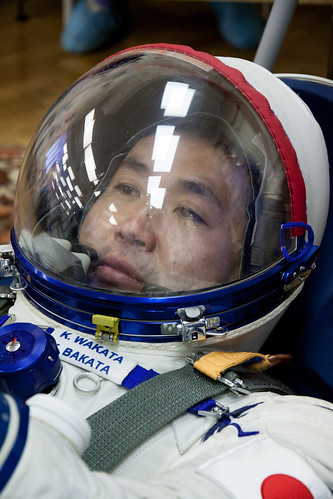Japan Aerospace Exploration Agency astronaut Koichi Wakata
Image by NASA: 2Explore
JSC2013-E-091207 (28 Oct. 2013) — In the Integration Building at the Baikonur Cosmodrome in Kazakhstan, Expedition 38/39 Flight Koichi Wakata of the Japan Aerospace Exploration Agency conducts a leak check of his Russian Sokol launch and entry suit during a fit check dress rehearsal Oct. 28. Wakata, Flight Engineer Rick Mastracchio of NASA and Soyuz Commander Mikhail Tyurin, Russian cosmonaut, are scheduled to launch Nov. 7, Kazakh time, in the Soyuz TMA-11M spacecraft from Baikonur to begin a six-month mission on the International Space Station. Photo credit: NASA/Victor Zelentsov
By implementing a good quality management system, companies belonging to the aerospace industry can improve the quality of their products and reduce their regular expenses at the same time. AS9100 has helped aerospace manufacturers and distributors by allowing them to keep up with the demands of clients in the aerospace industry.
In early 2009, a significant revision to the AS9100 standard was released. The revision, known as as9100 rev. c, was made to further optimize business operations of companies in the aerospace industry that are already benefiting from the original standard. Although implementing the revision might pose some challenges for some aerospace companies, the benefits it provides greatly outweigh the cost of implementation in the long run.
Compared to the original AS9100, the new revision offers better optimization, allowing greater overall quality of aerospace products, as well as far more efficient resource management. The revision also expands the scope of the original standard, including significant changes for design specifications used in aviation, air defense, and space exploration. It also reduces risk by providing better risk management processes. Finally, it incorporates changes present in ISO 9001:2008.
One of the most noticeable features of AS9100 rev. C is the introduction of two new terms: critical items and special requirements. Critical items include software and hardware components that directly affect the manufacturing and use of aerospace products, while special requirements are more specific, high risk requirements that are required by an individual client.
Upon implementation, a company will be able to give a better evaluation of the quality of its products. Since deliveries and business reports are always on time, businesses can accomplish more in less time. Clients will always be satisfied, keeping their doors open for future business transactions. Successful implementation warrants certification by an official AS9100 registrar.
However, businesses may encounter several challenges when implementing AS9100 rev. C, such as the establishment of risk management in order to minimize unnecessary costs and losses due to existing liabilities. This requires careful re-allocation of a company’s resources, which is never a simple task. However, if done successfully, companies will be able to benefit greatly, since they will incur less expenses in the long run.
Come see what were all about and visit us at www.ISARegistrar.com.
Nessun commento:
Posta un commento